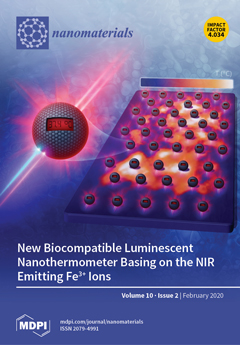Metallic and metal oxide nanoparticles (NPs), including titanium dioxide NPs, among polymeric NPs, liposomes, micelles, quantum dots, dendrimers, or fullerenes, are becoming more and more important due to their potential use in novel medical therapies. Titanium dioxide (titanium(IV) oxide, titania, TiO
2)
[...] Read more.
Metallic and metal oxide nanoparticles (NPs), including titanium dioxide NPs, among polymeric NPs, liposomes, micelles, quantum dots, dendrimers, or fullerenes, are becoming more and more important due to their potential use in novel medical therapies. Titanium dioxide (titanium(IV) oxide, titania, TiO
2) is an inorganic compound that owes its recent rise in scientific interest to photoactivity. After the illumination in aqueous media with UV light, TiO
2 produces an array of reactive oxygen species (ROS). The capability to produce ROS and thus induce cell death has found application in the photodynamic therapy (PDT) for the treatment of a wide range of maladies, from psoriasis to cancer. Titanium dioxide NPs were studied as photosensitizing agents in the treatment of malignant tumors as well as in photodynamic inactivation of antibiotic-resistant bacteria. Both TiO
2 NPs themselves, as well as their composites and combinations with other molecules or biomolecules, can be successfully used as photosensitizers in PDT. Moreover, various organic compounds can be grafted on TiO
2 nanoparticles, leading to hybrid materials. These nanostructures can reveal increased light absorption, allowing their further use in targeted therapy in medicine. In order to improve efficient anticancer and antimicrobial therapies, many approaches utilizing titanium dioxide were tested. Results of selected studies presenting the scope of potential uses are discussed in this review.
Full article






